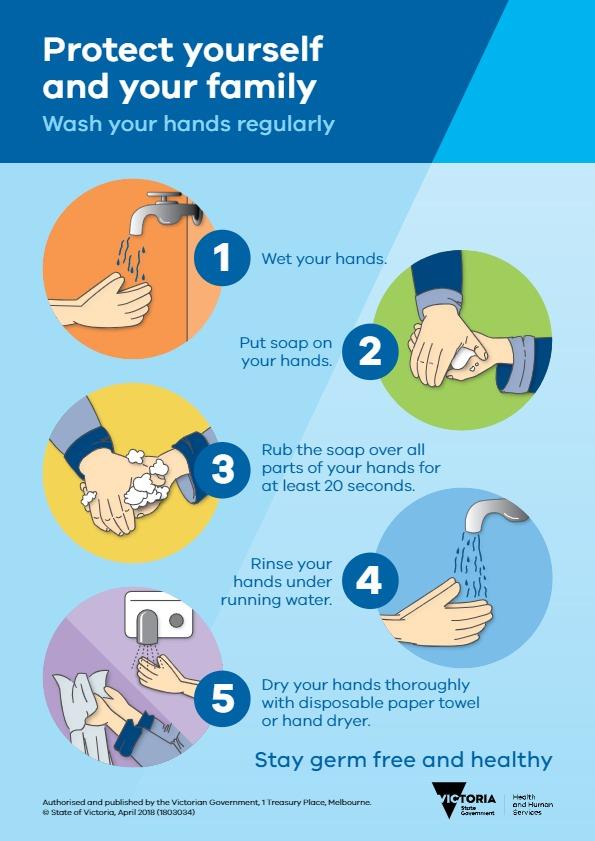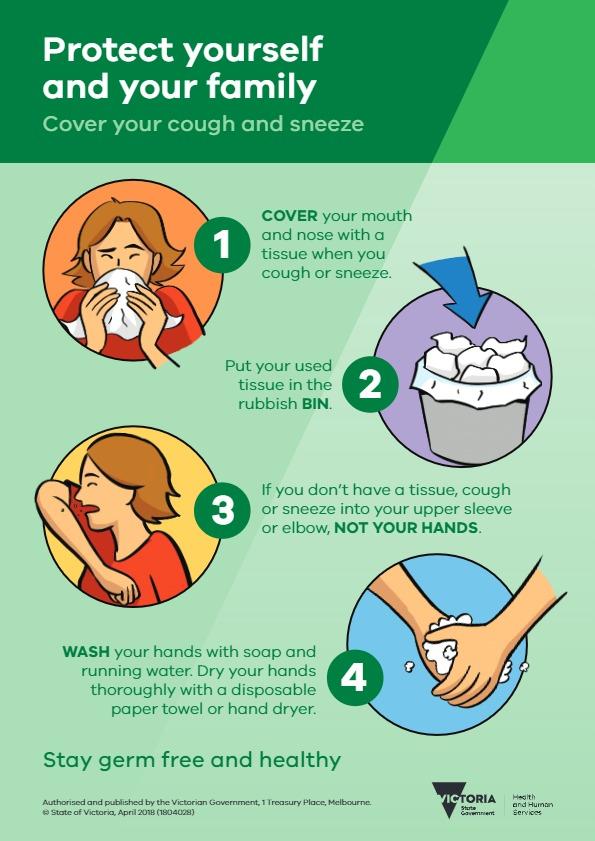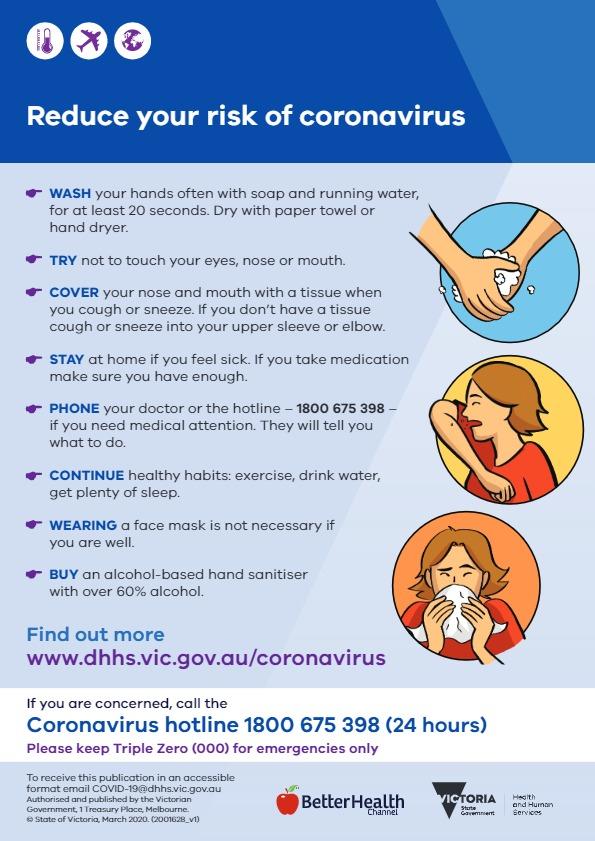Health & Wellbeing

School Community Health & Wellbeing
The well being of our school community is always first and foremost in our minds. It is imperative that during this COVID-19 pandemic that we consider the health and well being of our students and provide supports as required.
These supports include:
Pulse checks from our social workers on a class and individual student basis
Teacher check in sessions with classes on how students may be managing their emotions during this period
Observations for any changes in student behaviour, anxiety or emotional regulation as a response to media coverage etc.
ensuring information is shared and updated to keep school community informed of COVID-19 updates and precautionary measures.
The information below is from TALi Health (registered NDIS provider) which may be useful in helping children cope with the COVID-19 epidemic.
1. Identify the signs
While every child is different, parents and caregivers may want to keep an eye out for the following signs of rising anxiety levels in their children:
Excessive crying or irritation in younger children;
Returning to behaviours they’ve outgrown (e.g. toileting accidents or bedwetting);
Excessive worry or sadness;
Unhealthy eating or sleeping habits;
Irritability and ‘acting out’ behaviours in teens;
Poor school performance or avoiding school (in the case of schools still being open);
Difficulty with attention and concentration;
Avoidance of activities enjoyed in the past.
2. Speak openly, honestly and directly
When it comes to anxious children and COVID-19, being direct, open and honest is essential.
3. Limit media exposure
In emergencies such as we’re experiencing now, a number of news services are dedicating exclusive, if not blanket coverage to everything COVID-19-related. While helpful for many adults, this glut of information can have a negative effect on children. Hearing about the pandemic repeatedly can become very upsetting.
4. Set the example: remain calm yourself
Also described as ‘model calmness’, it’s important that parents and caregivers demonstrate control and calm when they’re around children.
5. Continue with your daily routine – as much as possible
Keep things as normal as you can for children who are displaying a heightened sense of anxiety.
It’s important that parents and caregivers recognise that children may be dealing with heightened feelings of anxiety as the COVID-19 pandemic unfolds. As well as monitoring our own anxiety levels, we need to take the time to look for signs in our children that they’re more anxious than usual.
We might not be able to fully calm our kids’ fears the way we’d like and, if we find that to be the case, it’s important to seek the advice of a professional sooner rather than later.



